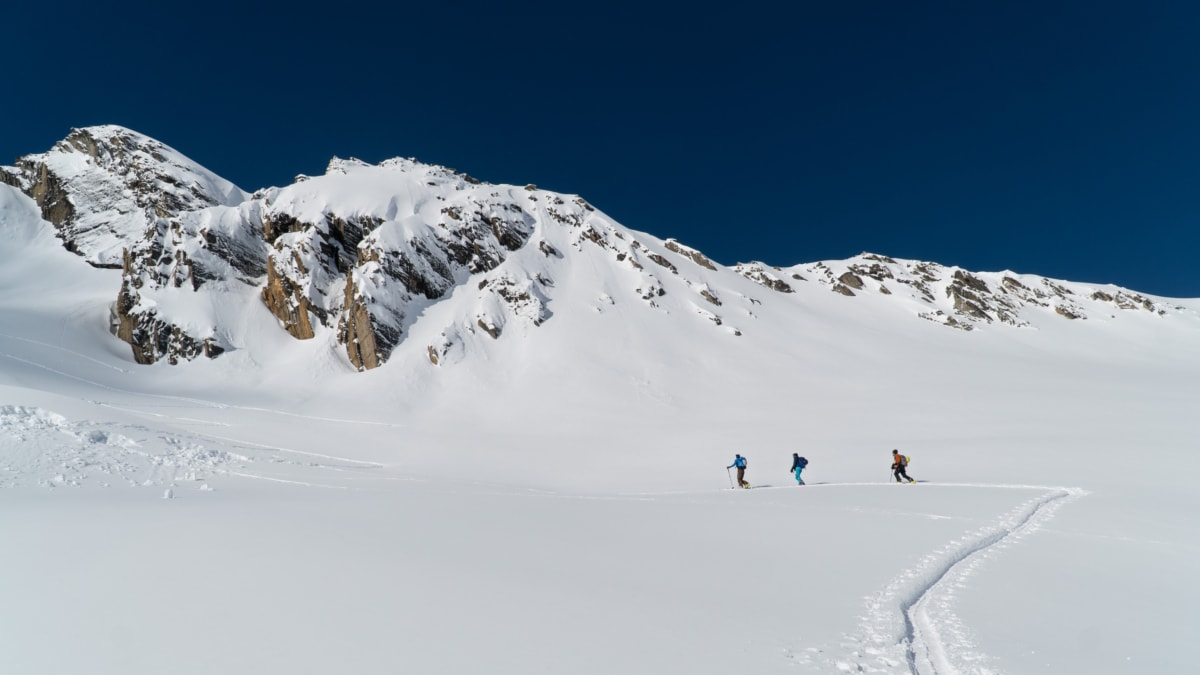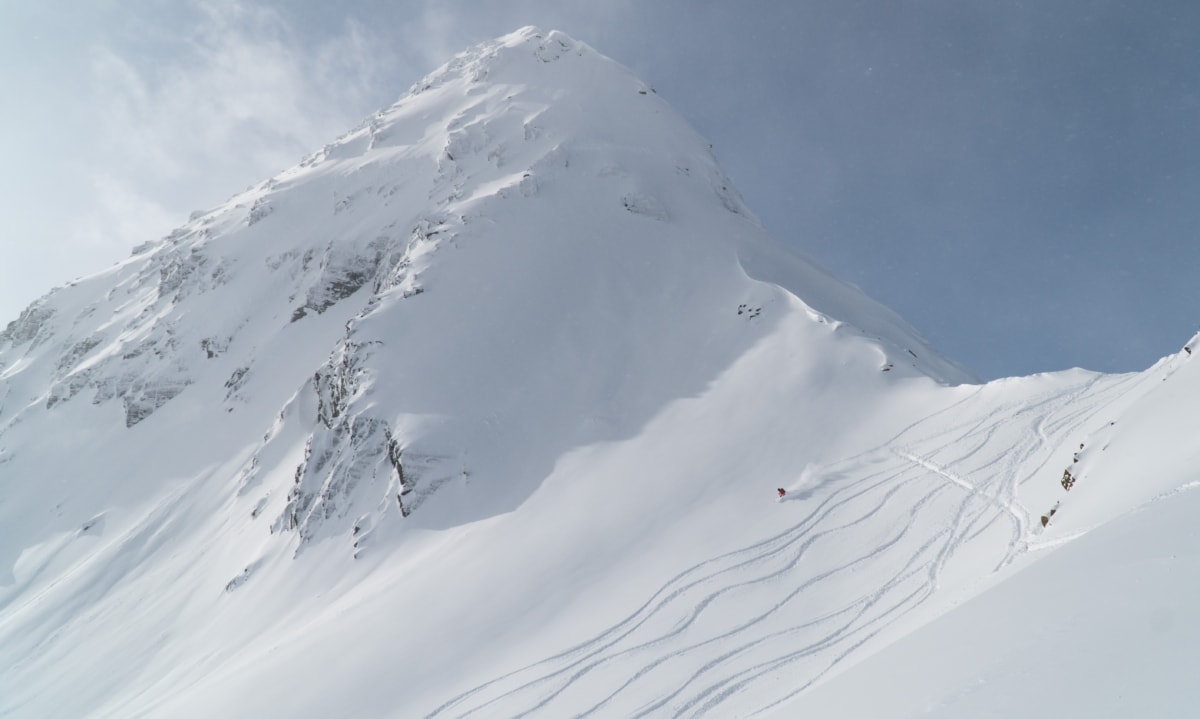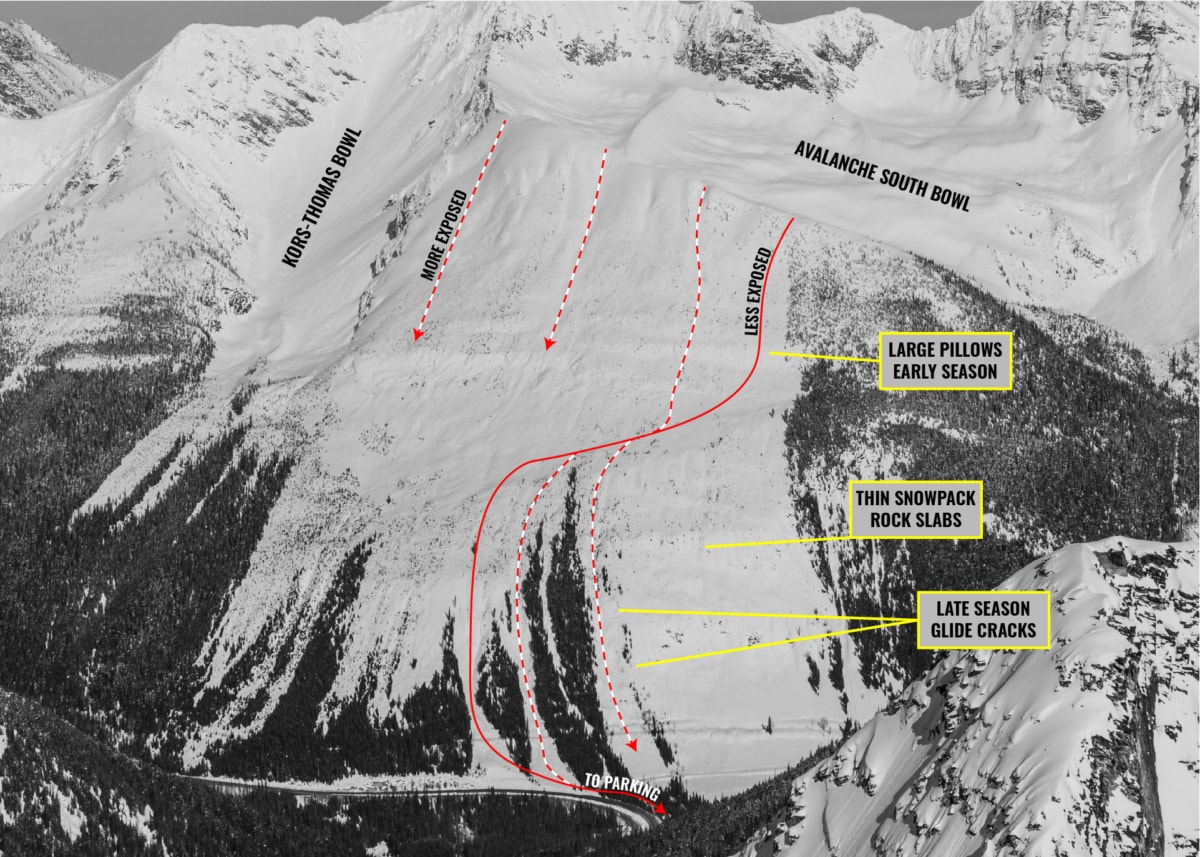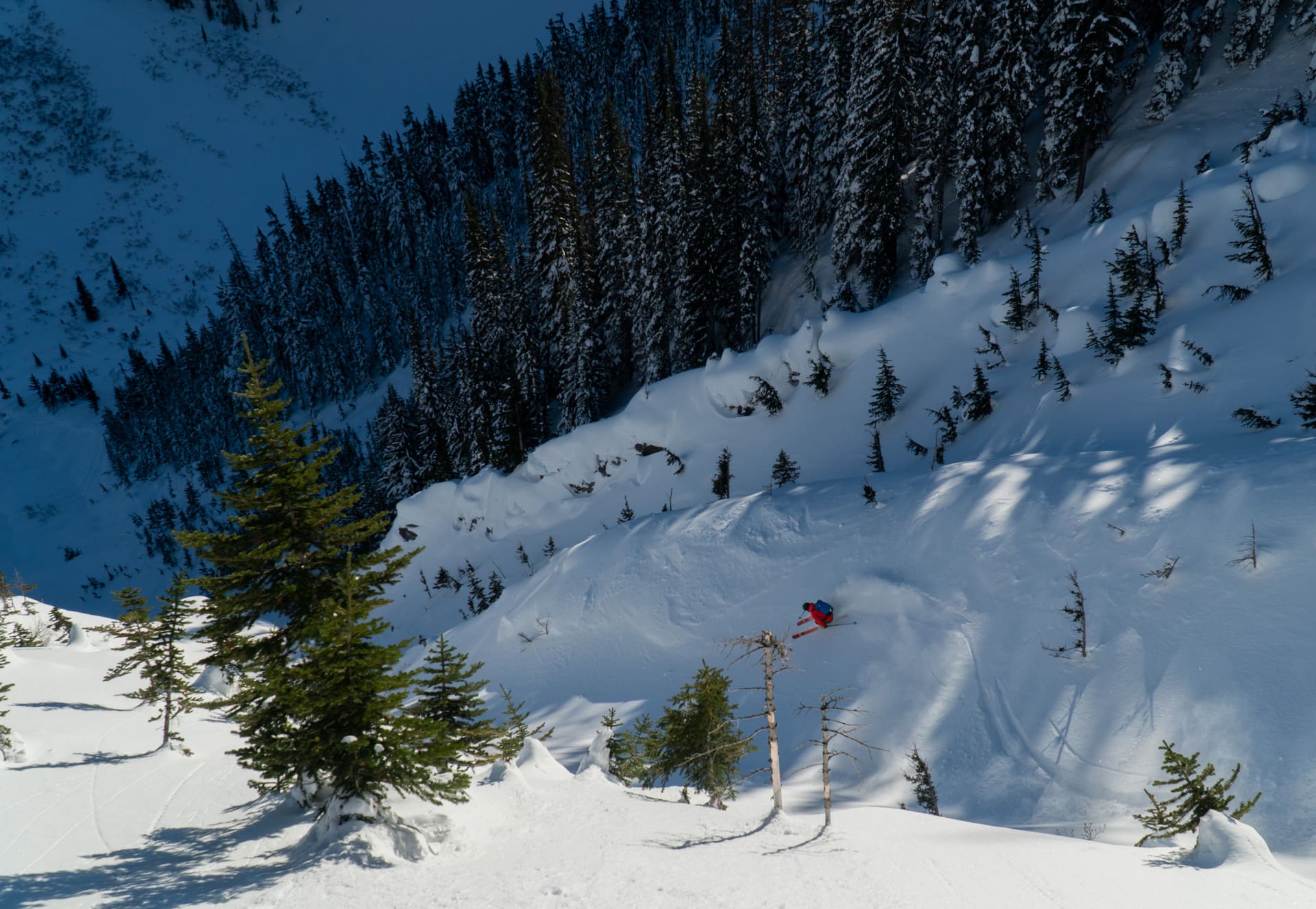For those that are unfamiliar with the area, Rogers Pass is THE Canadian ski touring mecca, harbouring some of the best runs in North America. Well-known for its huge snowfall and truly wild terrain, its mountains from one of Canada’s most impressive federal parks, Glacier National Park (not to be confused with the US counterpart). I’d say it’s definitely worth a week-long visit… or more. I’ve taken the liberty of detailing the best value routes to save you some suffering. Most of them already have a detailed trip report, worth reading for more information.
Some routes are located within a Winter Restricted Area (WRA) governed by the Winter Permit System. Please check the WRA status before travelling through it.

6. Dome Col Traverse
The Dome Col Traverse (aka the Lily-Dome) is a fantastic, scenic route crossing the Loop Brook and the Asulkan Valleys, my two favourite spots in Rogers Pass. If you can muster the 1600m vertical gain, the route delivers on majestic views of jagged peaks, exposed bootpacks and steep glacier skiing. It’s got all the elements of a true adventure. The ascent up the Lily Glacier is also much gentler than one would expect. Make sure to bring your glacier travel gear and practice crevasse rescues beforehand – the Lily and Dome Glaciers have big holes. I complete this day-long traverse every year (once or twice) and it never ceases to amaze me.

5. Video Peak SE Face
The SE Face of Video Peak is an absolute classic and one of Rogers Pass top runs. It’s common to witness a pilgrimage of skiers and splitboarders touring up the Hospital Bowl towards the summit. To be truthful, it isn’t as good a descent as the neighbouring 8812 Bowl: I find the descent to be short-lived and traversy. However, for what it lacks, you still get a chance to summit a stunning peak, granting panoramic views of the surrounding mountains. Also, skiing through the Hospital Gullies is a guaranteed blast! Beware: the SE face is a giant planar slope, ready to release on you when the conditions are prime. Assess the slope before skiing. Pro-tip: when the SE face gets skied out (as it always does after a storm), consider dropping the southern aspect instead for some fresh turns. You can then easily link up with the 8812 Bowl route through the Bruins Ridge uptrack. This makes for a healthy dose of alpine powder – yew!

4. 8812 Bowl
This list needs some big ol’ bowl skiing to be complete, and 8812 Bowl is exactly that. The climb is arduous for sure. If you can manage the bushy, beat-up Hospital Gully uptrack and the exposed Bruins Ridge, you’ve graduated from the Rogers Pass academy. All jokes aside, 8812 Bowl is an excellent, 1200m descent from alpine to treeline that grants epic views of the Connaught, Cougar and Ursus valleys. The route peaks at 8812 Col, a particularly windy spot overlooking Balu Pass. Some backcountry enthusiasts bring ski crampons to deal with the wind-battered Bruins Ridge, the final – sometimes tricky – section of the ascent. The run is definitely worth a try if you can manage the climb.

3. Macdonald West Shoulder (NRC)
There’s no denying the Macdonald West Shoulder, otherwise known as the NRC slopes, is an incredible ski touring or splitboarding route, ranking it high in Rogers Pass top runs in terms of best value. For starters, you begin your journey right from the parking lot with a five-minute approach on flat terrain. The ascent is relatively straightforward and minimizes walking through thick bush. Mind you: the terrain seems simple enough but, really, it isn’t. There’s a ton of overhead exposure from the alpine wind-battered ridge above. The treeless expanses that offer amazing skiing are actually giant avalanche paths. Beware! Dropping from treeline elevation, the skiing is playful and relatively open, offering excellent fall line turns right back to your vehicle.

2. Avalanche Crest
Okay, I think everyone will agree Avalanche Crest deserves high honours. It’s a constant-pitch 1000m run right down to the Trans-Canada Highway and the Illecillewaet parking lot where you start your tour. The run is peppered with booters, gully features and pillows as well. Avalanche Crest is one of the rare routes where you can do an uninterrupted top-to-bottom descent from summit to car. There’s a run for all levels too. From the sheltered, treed section to the south to the steep gullies to the north, there’s something for everyone. Due to its proximity and excellent skiing, it’s a busy area. Watch out for other skiers or boarders sending it overhead. The uptrack can also be ultra-slick, sometimes worth bringing ski crampons. Being west-facing, the slope tends to soak up the sun come February – be wary if the snowpack starts to get moist.

1. Rogers Run
Rogers Run sports a straight-down, 850m pitch of pure gold. You’ll be thrown into open alpine slopes, sparse trees, avalanche paths and huge pillow fields. Even better, its access is through the Grizzly Shoulder uptrack, no more than two kilometres from the Rogers Pass Discovery Center parking lot. It’s so close you can easily bang out two or three laps in a day without pushing your turn-around time. For all those reasons, it’s a very popular run – hear very busy. Best to start early to beat the crowds and the thousand of AST students following their guides up the shoulder. Since you’ll be mostly skiing through trees, navigation can be difficult at times. It’s best to bring a GPS map with you. Remember: don’t get sucked into the dangerous cliffs/gully to the skier’s left of the route. Lastly, keep in mind that the upper pitch is an exposed open slope that is regularly wind-loaded. I’ve had easy slab releases on some of the big convexities. In any case, give it a go – it’s one of Rogers Pass top runs.

Here it is – six of Rogers Pass top runs that balance the ascent with excellent skiing and epic views. Please do me a favour and don’t limit yourself to those routes. There’s so much to explore. I now find a whole lot more satisfaction in discovering new routes that are off the beaten path. Lastly, those routes take you through some hazardous terrain. It’s important to educate yourself about avalanche safety by taking Avalanche Skill Training (AST) before heading out on your own. Otherwise, hire a certified ski or mountain guide!
For more cool routes, check out the route map. It’s your one-stop shop for Rogers Pass ski touring beta.
